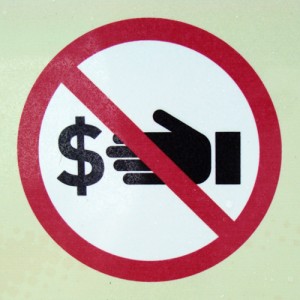Selling Local Sponsorships for Nonprofits: Closing the Deal
 Before my sales people head out to close a potential sale I always give them the same piece of advice: Don't screw it up.
But it's hard not to, and I still do it myself sometimes. Closing a sponsorship deal isn't easy, especially these days when companies are scrutinizing everything and watching every penny.
Before my sales people head out to close a potential sale I always give them the same piece of advice: Don't screw it up.
But it's hard not to, and I still do it myself sometimes. Closing a sponsorship deal isn't easy, especially these days when companies are scrutinizing everything and watching every penny.
Here are three tips to make sure that you earn the title of salesperson, instead of that of glorified customer service rep who can talk all day but can never close a deal!
Don't give them an excuse to say no. I hear about this all the time from companies. The nonprofits that call on them are inflexible, selfish and unrealistic. This is how not to be one of them.
- Build all your sponsorship packages a la carte. Don't walk in with one sponsorship option that they can only say yea or nay to. Follow my lead and build all our sponsorships from the ground-up, swapping things in and out based on the prospect's needs, interests and budget.
- Offer to lend a hand whenever possible. Companies are busier than ever. And while a sponsorship with you is undoubtedly a great opportunity, their success does not depend on it. That's why you should offer to be as helpful as possible. For example, when sponsors of Halloween Town had difficulty staffing their areas on both days, we offered to mobilize our volunteers on their behalf.
The best things in life are free. I use to think that it was only nonprofits that liked everything free. But for-profits love free too. Who wouldn't take a free sponsorship? But to make it free you have to employ this little thing I call the cause marketing twist. It works like this. Say that you want a sponsorship at an event like Halloween Town, but you're short on cash. If you're a retailer you could raise the funds needed for the sponsorship by doing a pinup program in your stores. The money you raise underwrites your sponsorship.
Think about the potential this has if your nonprofit hosts an annual cause walk. Instead of soliciting businesses for support from their checkbooks-- where there is little allotted to cause sponsorships anyway--they instead ask their customers to support your cause with a small donation.
The business wins because they get their sponsorship. The cause wins because they raise more money than they would have ever gotten from a company check. And the consumer wins because the charity and business work together to reward the customer for supporting the endeavor (see the $175 coupons we offered for a $1 donation for our Halloween Town pinup).
Increase touch points. Whenever we're working with businesses on a sponsorship, we're always looking for ways to make it less transactional and more meaningful. For example, a big part of my team's work is selling sponsorships for our annual Gala and golf tournament to hospital vendors. Now, these asks are naturally transactional because we're soliciting support from businesses that have a vested interest in supporting us. Regardless, we still try to multiply the touch points so each business knows just how important their gift is to supporting the hospital's mission.
The result has been that some of these vendors make company AND personal gifts, and some even continued giving after their business relationship with the hospital had ended.
For companies that are not vendors we try to get them to tour the hospital, speak with one of our docs or trustees, or least visit our blog or fan page, so they can see firsthand the work we do and make the sponsorship feel less like a deal and more like a commitment.
This might sound like common sense to you, but we've trained ourselves to sell the benefits of sponsorship so much we sometimes forget our mission! It might be just the opposite for you. Regardless, we all can't forget that a deal is not sealed with a one-finger shake. It takes all our fingers, a thumb and a palm before anyone will say "We have a deal."
